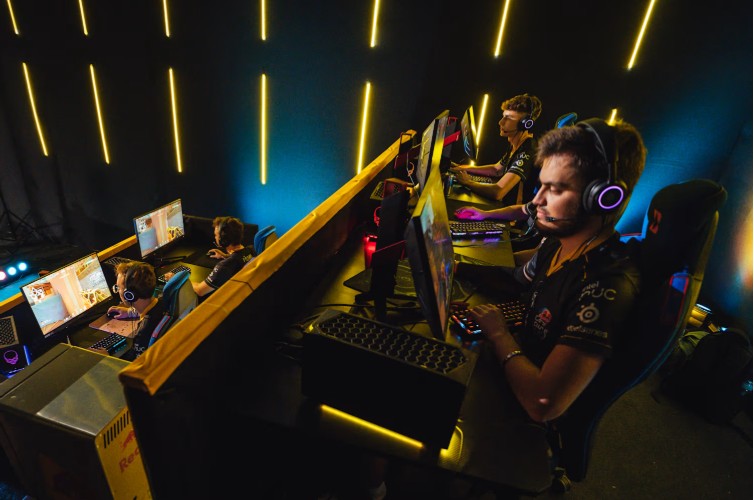In the evolving landscape of digital entertainment, video games have grown beyond simple leisure activities to become rich repositories of culture and collective memory. They function as virtual memory banks, capturing experiences, emotions, and narratives that reflect the spirit and concerns of their era. Each game embodies a mosaic of human creativity and societal reflection, allowing future generations to explore history, art, and social dynamics through interactive experiences. Players are simultaneously participants and observers, actively shaping stories while absorbing them. Through immersive worlds, detailed mechanics, and compelling narratives, video games ensure that cultural and generational stories remain alive and continue to influence audiences worldwide.
The role of games in cultural preservation

Video games often act as living archives, offering a lens into the societies and times in which they were created. Historical simulations, mythology-based RPGs, and even fantastical worlds frequently encode real-world customs, social hierarchies, and moral dilemmas within their narrative frameworks. For instance, platforms like cs2 watch live allow audiences to experience gameplay in real time, observing how players interact with these narratives and interpret historical or cultural contexts. Games such as Assassin’s Creed meticulously reconstruct historical cities and events, letting players explore and interact with them directly, transforming passive history lessons into immersive experiences. Beyond visual details, games embed philosophies, ethical questions, and societal debates, ensuring that these narratives are preserved alongside entertainment. In this way, video games provide a multi-layered digital record of culture, which researchers, players, and enthusiasts can study and appreciate over time.
Interactive storytelling and memory retention
The interactive nature of video games significantly enhances memory retention. Unlike books or films, where audiences absorb narratives passively, games require players to make decisions, solve complex problems, and engage actively with storylines. This hands-on involvement strengthens cognitive connections, making characters, events, and plotlines more memorable. Titles such as The Witcher 3 or Life is Strange immerse players emotionally, requiring moral and strategic choices that influence story outcomes. Branching narratives allow players to create unique experiences, effectively generating personal memories that are tied to cultural narratives. Additionally, in-game environments, sound design, and visual storytelling reinforce these memories, providing a richer, more enduring impression than traditional media. The combination of interactive engagement and narrative depth ensures that video games act as powerful tools for preserving generational stories.
Live gameplay and shared experiences

Modern gaming has evolved into a communal activity through streaming platforms, creating shared digital memories and expanding the scope of virtual memory. Live streams allow both players and spectators to experience gameplay together, turning the act of playing into a social event. Platforms like cs2 watch live enable viewers to follow competitive matches and narrative-driven games in real time, witnessing strategies, reactions, and story developments as they unfold. This communal engagement captures collective experiences, emotions, and interpretations, which are archived through streams, recordings, and highlight reels. Beyond competitive gaming, cooperative and casual playthroughs also document social dynamics, humor, and cultural references, adding depth to the digital memory preserved. These archives act as historical records, offering future generations insights not only into game content but also into how communities interpreted and celebrated these stories over time.
Preservation of generational knowledge
Video games also act as intergenerational connectors, preserving knowledge about design philosophies, technological innovation, and gameplay culture. Classic games are often remade or remastered, allowing new players to experience earlier forms of play and appreciate the creative decisions of past developers. This continuity maintains a cultural lineage within the gaming community, passing knowledge from one generation to the next. Games such as Super Mario Bros., Half-Life, and early RTS titles influence modern mechanics, storytelling, and world-building, showcasing the evolution of design principles and player expectations. Additionally, archives of mods, fan content, and community-created expansions preserve alternative interpretations and cultural adaptations, enriching the historical record. By documenting both official narratives and community-driven content, games become living repositories that capture decades of creative thought, social interaction, and technological progress.
Conclusion
In conclusion, video games are powerful instruments for preserving the stories of generations. Through historical reconstructions, interactive storytelling, and communal experiences, games act as virtual memory banks, capturing not only narratives but also the emotional, social, and cognitive engagement of players. Platforms for live streaming and archival content, like cs2 watch live, expand the reach of these stories, ensuring that collective experiences are documented and accessible for future generations. Recognizing the role of video games as tools for cultural preservation highlights their value beyond entertainment—they are immersive, interactive chronicles that connect past, present, and future generations through the enduring power of digital storytelling.














